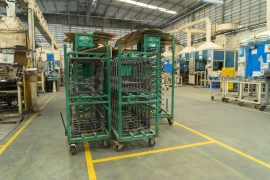There are a lot of jobs that require having a crane to be able to complete. The problem is that having a crane all the time can cost a company or individual a lot of money. They cost money to maintain and insure. It isn’t always feasible to have one. This is why it’s better to hire lifting services Manchester so you can have a crane when you need it and not have to buy one.
The problem lies in knowing which crane to rent since there are many different types. Each one is ideal for a specific purpose so it’s important to make sure you have the right one for the job that you’re doing. In this article, we will go over how to pick the right crane for your needs.
Know the conditions of the worksite
One of the biggest factors that will determine whether you get the right crane or not will hinge on how well you understand the conditions of the worksite. The first thing to consider is the space of the site since different cranes need a certain spatial radius to be able to maneuver around. With space constraints, certain types of crane won’t be feasible since they won’t be able to make the moves required.
Luckily there are mini cranes that have good mobility and can operate in tight spaces. If your work area is small or has a lot of obstacles then this is an option.
There is also the type of ground that will play a part. Muddy and wet conditions will make it difficult for the crane as well. Some need to have solid and smooth surfaces on which to move, otherwise they can get stuck or even be dangerous to operate.
Rough terrain cranes are designed for just such conditions and are going to be able to get the job done even when the ground is not ideal.
Transporting the crane
Where your worksite is located is also a factor since you will need to transport a large piece of equipment to the site. The transportation of a crane can pose such difficulty that there are permits required to do so. You’ll need to get permission from the city or state to make sure that you know what you need. Some types of cranes are not going to be permitted to travel to your site through certain areas. If there is no other way to get the crane there and a permit is denied then you’ll need to find a different type of crane.
How long is the job?
Once the other considerations are factored in, you now have a whittled down selection of the cranes that can be brought to your site. Of those, you have to choose between the ones that can lift the materials and will be available for the duration of the job.
At this point, the last determination is finding the crane with the capacity to lift what you need it to.





